For new hobbyists, it is likely that the first fish you decide on keeping is a Goldfish (Carassius auratus), or at least the first one that comes to mind.
They are undoubtedly one of, if not the most popular fish in the entire hobby, but what a lot of people perhaps miss out on is the fact that there are a lot of different types that come in an abundance of brilliant and unique shapes and sizes!
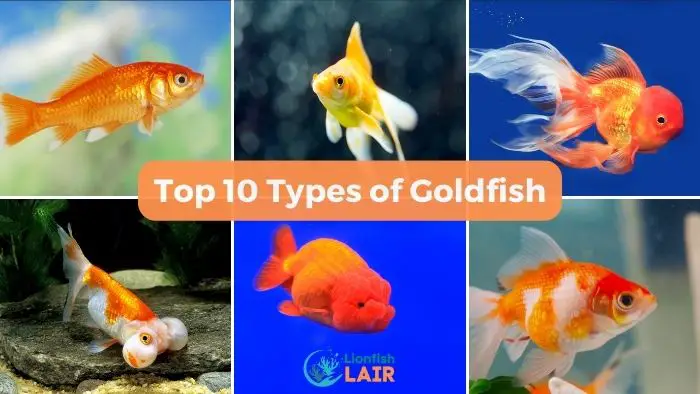
There are so many varieties of Goldfish that some are honestly unrecognizable, and you would never know that they are in the Goldfish family.
In this list, we will split the Goldfish into groups, "single-tailed", and "fancy goldfish". Both types have an abundance of awesome and unique Goldfish to check out.
Best Types Of Single Tailed Goldfish
This type of Goldfish is called this because, you guessed it, they have a singular tail. They are also known as non-fancy goldfish because they physically still resemble their Prussian Carp ancestors.
They sport slim bodies without any additional modifications, sure, their colors can be different, but apart from that, they are very similar to their predecessor. They are peaceful by nature, which makes them compatible with most Goldfish tank mates.
Common Goldfish
Another Goldfish name that is pretty self-explanatory! The common Goldfish are definitely the most popular, especially with beginners. They sport a typical orange, yellow, or white color and are common feeder fish, perfect as the first fish to start your fishkeeping journey.
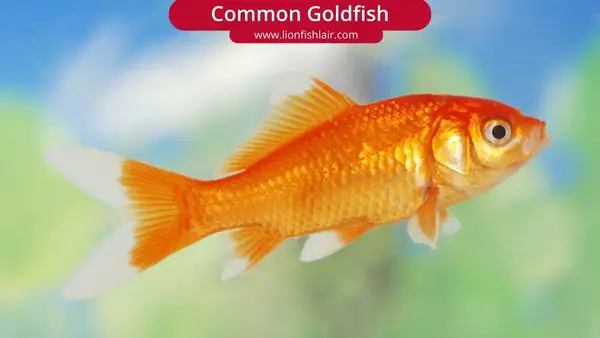
These Goldfish typically feature an elongated body and a short, singular tail. They will usually grow to their surroundings, maxing out at roughly 10 inches (25cm) in length, and on occasion, have been known to grow to a tremendous 19 inches (48cm).
This is something that a lot of people don't realize about these fish - they will get big! However, it is relative to their surroundings, so, in a small home aquarium, you do not need to worry about them growing to 10 inches in length!
Comet Goldfish
These Goldfish are another incredibly common fish that hail from the single-tailed family. The main difference between these Comet Goldfish and the Common Goldfish is the tail. Common goldies have a short tail, which is often referred to as the caudal fin, whilst Comet goldies have a much longer, and sail-like tail.

Comet Goldfish are typically seen in orange, yellow, and white colors, and if you are lucky, you might be able to discover one with a white body and orange spots. They usually grow around their environment, but like the Common Goldfish, they will get to roughly 10 inches (25cm), and have been known to hit 19 inches (48cm) in some instances!
Shubunkin Goldfish
These beautiful Goldfish are bred pretty much solely for their unique coloration. They are almost identical to the Comet Goldfish with regards to their body shape and awesome tail, but their calico coloration and pattern are something completely different.
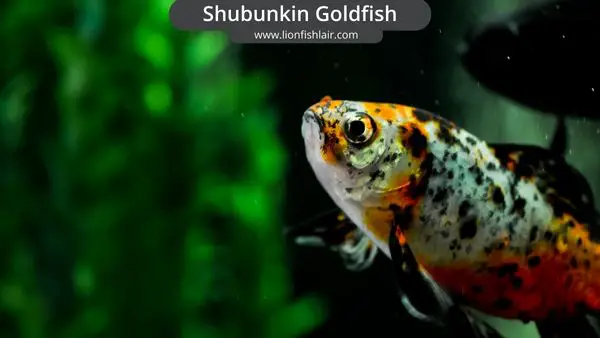
The array of colors they sport include orange, blue, black, gray, and white. If you love aesthetics and having a colorful tank, these are undoubtedly the pick for you. They typically grow to 10 inches (25cm), but again, have been known to reach up to 19 (48cm)!
Wakin Goldfish
The Wakin Goldfish is a truly quirky fish, and often causes confusion among hobbyists due to it being almost half fancy and half non-fancy! They sport a double tail but an elongated body, suspected by many experts to be the ancestor of the fancy Goldfish types, but due to their body shape, they are referred to as common.
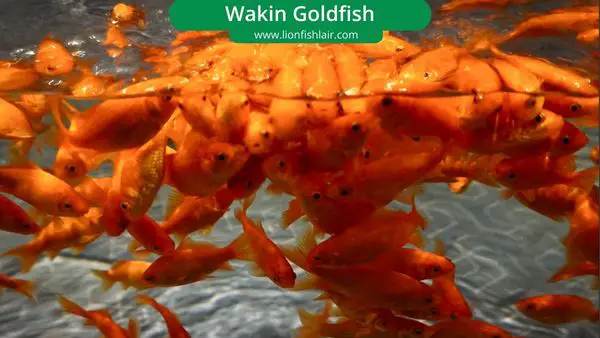
These longer-bodied Goldfish will grow much larger in length than the stockier fancy Goldfish. Also, they are far better and more active swimmers, so, therefore, are seen by many as pond fish. They will thrive in large tanks and pond environments. The Wakins will grow to 10 (25cm) inches in length but have been known to reach 12 inches (30cm).
Best Types Of Fancy Goldfish
The reason for the name "fancy" is because these types of Goldfish have been specifically bred to showcase the physical attributes that the single-tail Goldfish do not possess. Almost all fancy Goldfish have double-tails and feature vastly different body shapes.
They tend to rock shorter, and much thicker, more stocky bodies than the single-tails. This makes them slower swimmers and naturally more sensitive to temperature changes, so it is advised to keep them indoors and not in ponds. It is also not recommended to keep fancies and single-tails together as the single-tails will usually be first to all the food, leaving the slower fancies hungry.
Fantail Goldfish
Out of all the fancy Goldfish, the Fantail is probably the most common fancy goldfish type. They sport an egg-shaped body, an elongated dorsal fin, and a long, sail-like tail that shimmers in the water.
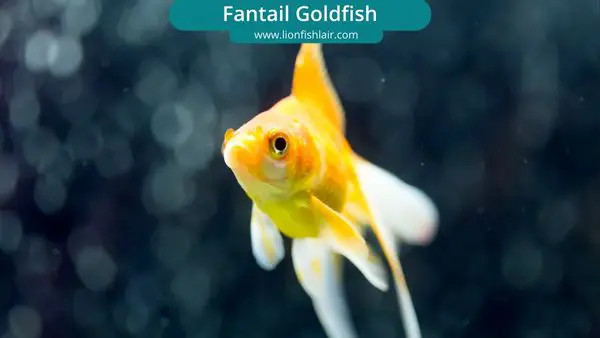
The Fantail Goldfish are very beginner-friendly, suitable for all levels of fishkeeping due to them not requiring extra care like some of the other fancy Goldfish. Much like the majority of fancies, these Fantails are too slow and lethargic to be kept with the single-tails.
Pearlscale Goldfish
These Goldfish are certainly one of the more unique on the list, bred specifically to have an incredibly large, round, and golf ball-like body and thick scales.
The drawback is that the heavy and extensive breeding program has caused this to not be very hardy at all, meaning that they will likely pick up fatal diseases if the water isn't regularly cleaned to pristine quality.
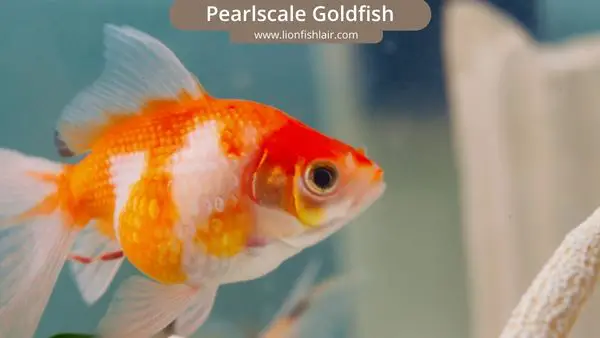
Something to be mindful of when your goldfish is lying down at the bottom of the tank facing downwards, is that they are likely sleeping, but could have contracted an illness or disease, so, it is advised to closely monitor your fish when this happens.
Their body shape has been changed and altered so frequently over the years that a lot of them will acquire swim bladder issues. Usually, the swim bladder will spot functioning altogether if untreated.
Ryukin Goldfish
Considered by many to be the eastern version of the Fantail Goldfish, the Ryukin Goldfish are very tall fish, with a shoulder hump that appears behind their head.
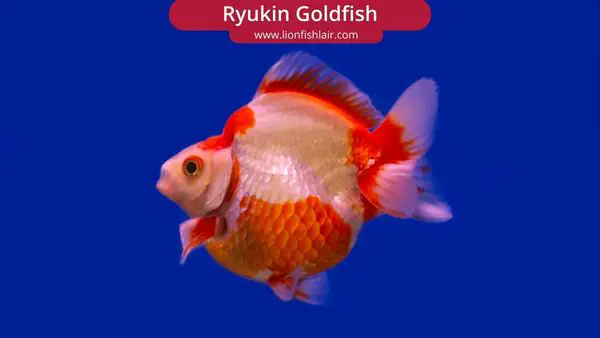
Ironically, these fish are actually taller than they are long, which is shocking and almost unheard of in any type of fish!
They are certainly the larger out of the fancy Goldfish types, which means that you should certainly consider a larger tank for them.
The good thing is they are pretty hardy, meaning that they will adapt better than most to temperature changes, keeping them in a pond isn't a bad idea!
Bubble Eye Goldfish
These Goldfish are truly unique and are often perceived as either beautiful or plain ugly.
The Bubble Eye Goldfish's name is rather self-explanatory, they have been selectively bred to feature water-filled sacs underneath their eyes. As these fish continue to grow in size, so do their sacks, often reaching rather sizes.
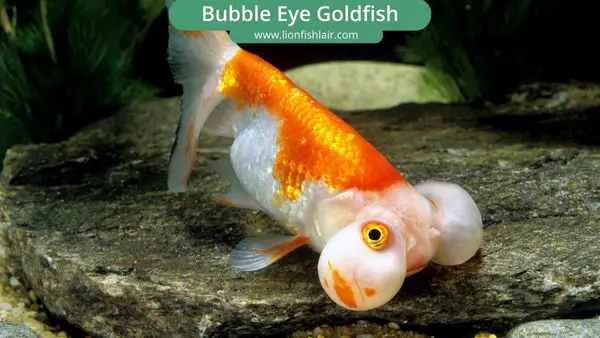
Bubble Eye goldies are undoubtedly bad fish for beginners due to their specific care and needs. Your tank must be carefully established, without any sharp objects that could pop your Goldfish's bubbles as they are very fragile.
Their bubbles do usually regrow, but you run the risk of infections and disease. When pairing them with other fancy Goldfish, make sure to pair them with equally slow fish as they are not strong swimmers and will be left hungry if they are in with quicker fish.
Oranda Goldfish
Oranda Goldfish are certainly one of the most popular out of the different fancy Goldfish varieties. They sport a fleshy growth on their head known as a wen, which many think is similar to a Lion's mane.
The Oranda fry looks very similar to the Fantail Goldfish at the start, but as they grow older, their head growth will begin to grow too.
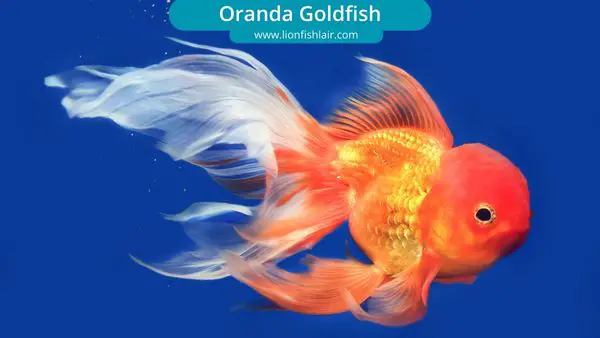
They are good feeders compared with other Fancy Goldfish and are peaceful by natrure, meaning that there are many compatible Oranda tank mates
They are without a doubt one of the quicker and hardier Goldfish to hail from the fancy family. Much like the bubbles on the Bubble Eye goldfish, their head growth must be protected from damage and infection.
Sometimes, the growth will be too large and may require the hobbyist to gently trim it with sanitized and clean scissors. Only do this if you know exactly what you are doing, the reason it is possible is that the growth doesn't contain any blood vessels.
Lionhead Goldfish
The Lionhead Goldfish, like the Oranda sports a wen, but in addition to this, they have no dorsal fin. Lionheads have a full head growth that sticks up from their head, looking somewhat different from the growth on the Oranda.

Due to them not having a dorsal fin, they will swim pretty slowly, so best to keep them with equally slow Goldfish.
Their wen, much like the Oranda can grow pretty big, and end up distorting their vision. Again, only if you know what you are doing should you opt to trim the growth yourself.
Single Tailed Goldfish Tank Requirements
Unfortunately, there is still a lot of false information out there regarding Goldfish homes, with many people still keeping theirs in bowls, vases, and jars because it looks "trendy" and "unique".
This will undoubtedly lead to a very unhappy and ultimately unhealthy fish, resulting in premature death.
The problem with Single Tailed (Common Goldfish) is that they are so popular and, you guessed it, common!
This means a lot of people with little to no fishkeeping experience are selling or looking after them without knowing what they are doing or their fish's best interests.
Speaking to or consulting an expert or fish store worker about the specific fish requirements is what all Goldfish owners should do.
How To Choose The Right Tank Size
Single Tailed Goldfish can reach extremely large sizes, and on the rare occasion they can grow up to 19 inches (48cm) in length! This means that keeping them in tiny bowls and jars is not advised and is somewhat cruel to your fish.
Not only is it just way too small of an environment for your Goldie, but it will likely result in stunting their growth.
You may think that their growth being stunted is OK and that they are just naturally adapting to a smaller environment. But the truth is, stunting a Goldfish's growth is a sign that their living conditions are extremely unhealthy.
All of these factors will almost always lead to your Goldfish dying at a much younger age than expected.
The Single Tailed Goldfish will need to live in a tank that is at least 100 gallons (454 liters) or more. Alternatively, a pond environment of 200+ gallons (909 liters) will perfectly accommodate their size, and activities. The graphic below displays the classic dimensions for a single tailed goldfish aquarium:
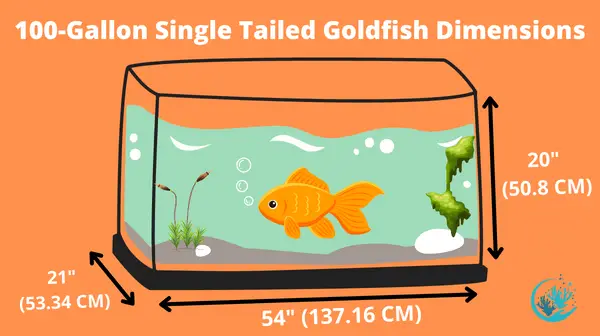
Fancy Goldfish Tank Requirements
Fancy Goldfish are generally smaller than Single Tailed goldies, they are also far less active and much slower swimmers. However, they still should not be kept in small bowls and jars, this is inhumane even for the lazier Goldfish! They can, alternatively, live in small in-house aquarium tanks as long as you fulfill their needs.
Ideal Tank Size
20 Gallons of water or more per Fancy Goldfish is a perfect size, they also need a good water filter. Goldfish tend to stick in groups, so as a minimum, you will want a tank of 40 gallons or more depending on how many you are planning on having.
The graphic below displays the typical dimensions for a fancy goldfish aquarium:

Fancy Goldfish Water Quality
By providing your Fancy Goldfish as much room in their tank as possible, you give them the best chance of not only surviving but thriving and living a happy life. Something many people don't consider too is the size Fancy Goldfish can get too, making a 40-gallon tank look tiny when fully grown into an adult.
Goldfish, Fancy or not produce an extortionate amount of waste, which results in dirty, bacteria-infested water. This is not good for Fancy Goldfish as they are not particularly hardy fish, and will need 50% water changes at least twice a week!
Conclusion
Hopefully, this Goldfish guide has taught you that there are much more Goldfish out there than the common ones you see on the T.V or in your local pet store. There is an abundance of different Goldfish, all boasting different shapes, sizes, colors, and most importantly care and requirements!
